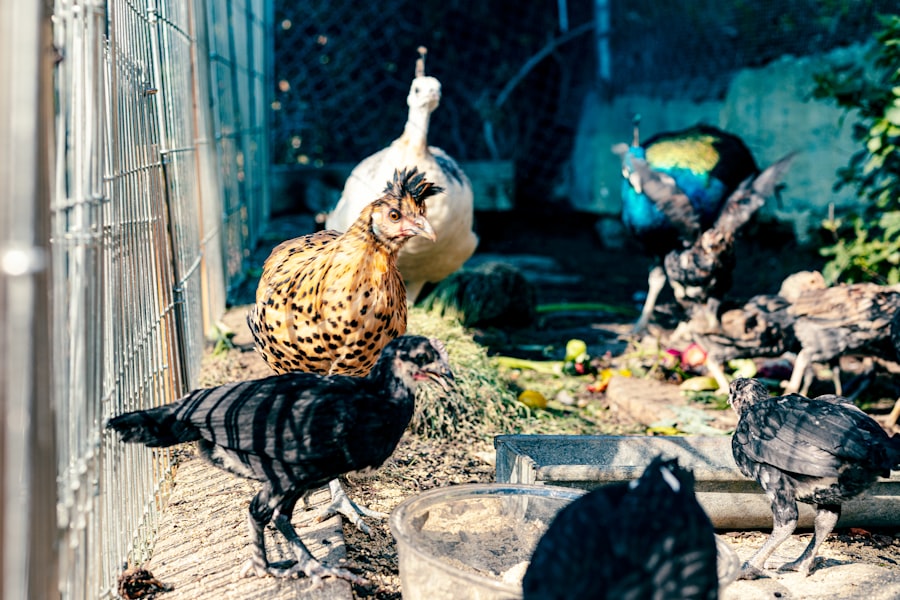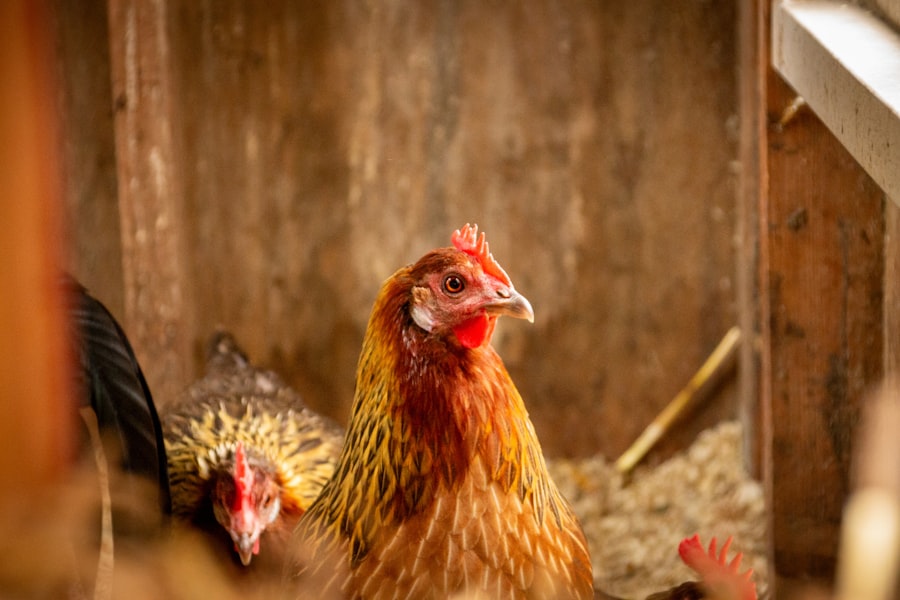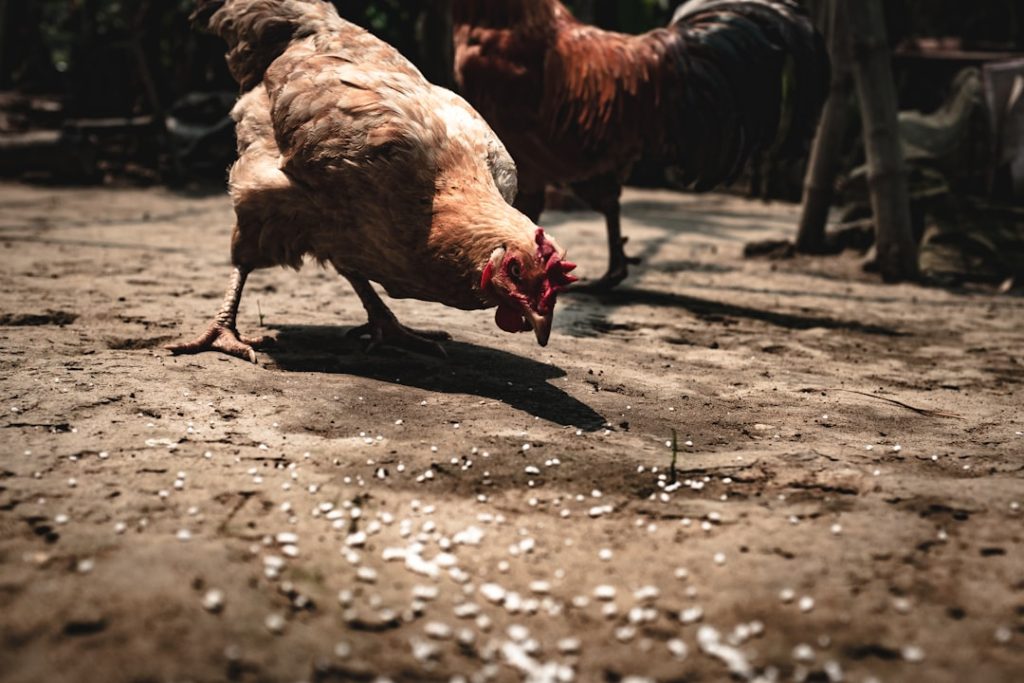Keeping new chickens inside is a crucial aspect of poultry farming, especially for those who are just starting out. It involves providing a safe and controlled environment for the chickens to grow and develop before they are ready to be transitioned outdoors. This process is essential for the health and well-being of the chickens, as it allows them to acclimate to their new surroundings and reduces the risk of exposure to predators, diseases, and harsh weather conditions.
Additionally, keeping new chickens inside gives poultry farmers the opportunity to closely monitor the birds’ growth and behavior, ensuring that they are ready for outdoor living when the time comes. In this article, we will explore the importance of keeping new chickens inside, factors to consider when deciding how long to keep them indoors, the recommended timeframe for indoor housing, tips for preparing chickens for outdoor living, and how to monitor them after transitioning outdoors.
Table of Contents
- 1 The Importance of Keeping New Chickens Inside
- 2 Factors to Consider When Deciding How Long to Keep New Chickens Inside
- 3 Recommended Timeframe for Keeping New Chickens Inside
- 4 Tips for Preparing New Chickens for Outdoor Living
- 5 Monitoring New Chickens After Transitioning Outdoors
- 6 Conclusion and Final Considerations for Keeping New Chickens Inside
- 7 FAQs
- 7.1 How long should new chickens be kept inside?
- 7.2 Why is it important to keep new chickens inside for a certain period of time?
- 7.3 What should be included in the coop or enclosed area for new chickens?
- 7.4 Can new chickens be let outside before the recommended time period?
- 7.5 What signs indicate that new chickens are ready to be let outside?
Key Takeaways
- Keeping new chickens inside can help protect them from predators and harsh weather conditions
- It is important to keep new chickens inside to allow them to acclimate to their new environment and establish a routine
- Factors to consider when deciding how long to keep new chickens inside include their age, breed, and the weather conditions outside
- It is recommended to keep new chickens inside for 4-6 weeks before transitioning them outdoors
- When preparing new chickens for outdoor living, provide them with a secure coop, access to fresh water and food, and a safe outdoor space to roam
- Monitor new chickens closely after transitioning them outdoors to ensure they are adjusting well and staying healthy
- Keeping new chickens inside initially can help them thrive and stay safe as they adjust to their new environment
The Importance of Keeping New Chickens Inside
Protection from Threats
By keeping them inside initially, poultry farmers can provide a safe and controlled environment where the chickens can grow and develop without these risks.
Acclimation and Monitoring
This allows the birds to acclimate to their surroundings and build up their strength and immunity before being exposed to the challenges of outdoor living. Additionally, keeping new chickens inside gives farmers the opportunity to closely monitor the birds’ growth and behavior, ensuring that they are healthy and ready for the transition outdoors.
Establishing a Routine
By providing a secure indoor environment, poultry farmers can also establish a routine for feeding, watering, and cleaning, which is essential for the chickens’ overall well-being.
Factors to Consider When Deciding How Long to Keep New Chickens Inside

When deciding how long to keep new chickens inside, there are several factors that poultry farmers should consider. Firstly, the age of the chickens plays a significant role in determining the duration of indoor housing. Young chicks require a longer period of indoor housing compared to older birds, as they are more vulnerable and need time to develop their feathers and immunity.
Additionally, the weather conditions in the area should be taken into account. If the climate is harsh or unpredictable, it may be necessary to keep the chickens inside for a longer period to ensure their safety and well-being. The availability of outdoor space and predator-proofing measures also influence the decision, as chickens need a secure outdoor environment before they can be transitioned outside.
Lastly, the overall health and behavior of the chickens should be closely monitored to determine when they are ready for outdoor living.
Recommended Timeframe for Keeping New Chickens Inside
The recommended timeframe for keeping new chickens inside varies depending on several factors, including the age of the birds, weather conditions, and the overall readiness for outdoor living. For young chicks, it is generally recommended to keep them inside for at least 6-8 weeks before transitioning them outdoors. During this time, the chicks can develop their feathers, build up their immunity, and grow stronger before facing the challenges of outdoor living.
Older birds may require a shorter period of indoor housing, typically around 2-4 weeks, as they are more developed and resilient. However, it is important to consider the specific needs of each flock and monitor their progress closely to determine the optimal timeframe for transitioning them outdoors. Additionally, it is crucial to ensure that the outdoor space is secure and predator-proof before allowing the chickens to roam freely.
Tips for Preparing New Chickens for Outdoor Living
Preparing new chickens for outdoor living requires careful planning and consideration to ensure a smooth transition from indoor housing. One important tip is to gradually introduce the chickens to the outdoor environment by allowing them supervised access to a secure outdoor space before fully transitioning them outdoors. This helps the birds acclimate to their new surroundings while minimizing the risk of exposure to predators or harsh weather conditions.
Additionally, providing ample shelter, shade, and access to fresh water and food outdoors is essential for the chickens’ well-being. Poultry farmers should also monitor the birds closely during their outdoor time to ensure that they are adapting well and are not experiencing any stress or health issues. Lastly, it is important to gradually increase the chickens’ outdoor time as they become more accustomed to their new environment, allowing them to build up their strength and resilience before being fully transitioned outdoors.
Monitoring New Chickens After Transitioning Outdoors

Close Observation is Key
After transitioning new chickens outdoors, it is crucial to monitor them closely to ensure that they are adapting well to their new environment. Poultry farmers should observe the birds’ behavior, eating habits, and overall health to identify any signs of stress or illness.
Ensuring a Safe Outdoor Space
Additionally, it is important to regularly check the outdoor space for any potential hazards or predator activity that may pose a threat to the chickens. Providing ample shelter, shade, and access to food and water outdoors is essential for the birds’ well-being, especially during hot or inclement weather.
Gradual Transition for a Smooth Adjustment
Poultry farmers should also gradually increase the chickens’ outdoor time as they become more accustomed to their surroundings, allowing them to build up their strength and resilience before being fully transitioned outdoors. By closely monitoring the birds after transitioning outdoors, farmers can ensure that they are thriving in their new environment and make any necessary adjustments to promote their overall well-being.
Conclusion and Final Considerations for Keeping New Chickens Inside
In conclusion, keeping new chickens inside is a crucial aspect of poultry farming that plays a significant role in ensuring the health and well-being of the birds. By providing a safe and controlled environment for the chickens to grow and develop before transitioning them outdoors, poultry farmers can minimize the risks of exposure to predators, diseases, and harsh weather conditions. When deciding how long to keep new chickens inside, factors such as age, weather conditions, outdoor space availability, and overall readiness for outdoor living should be carefully considered.
The recommended timeframe for indoor housing varies depending on these factors, with young chicks typically requiring a longer period indoors compared to older birds. Preparing new chickens for outdoor living involves gradual introduction to the outdoor environment, providing ample shelter and access to food and water outdoors, and closely monitoring their progress after transitioning outdoors. By following these guidelines and closely monitoring the birds’ progress, poultry farmers can ensure a smooth transition from indoor housing to outdoor living for their new chickens.
If you’re wondering how long to keep new chickens inside, you may also be interested in learning about chicken coop run plans. Check out this article for tips on creating a safe and comfortable outdoor space for your chickens to roam.
FAQs
How long should new chickens be kept inside?
New chickens should be kept inside a coop or enclosed area for at least 4-6 weeks to allow them to acclimate to their new surroundings and to prevent them from wandering off or getting lost.
Why is it important to keep new chickens inside for a certain period of time?
Keeping new chickens inside for a period of time allows them to become familiar with their new environment, establish a sense of home, and bond with their flock. It also helps to prevent them from getting lost or attacked by predators.
What should be included in the coop or enclosed area for new chickens?
The coop or enclosed area for new chickens should include nesting boxes, perches, food and water sources, and adequate ventilation. It should also be predator-proof to ensure the safety of the chickens.
Can new chickens be let outside before the recommended time period?
It is not recommended to let new chickens outside before the recommended time period, as they may not be familiar with their surroundings and could easily become lost or fall victim to predators.
What signs indicate that new chickens are ready to be let outside?
Signs that new chickens are ready to be let outside include confident behavior, familiarity with their surroundings, and a strong bond with their flock. It is important to observe their behavior and readiness before allowing them outside.
Meet Walter, the feathered-friend fanatic of Florida! Nestled in the sunshine state, Walter struts through life with his feathered companions, clucking his way to happiness. With a coop that’s fancier than a five-star hotel, he’s the Don Juan of the chicken world. When he’s not teaching his hens to do the cha-cha, you’ll find him in a heated debate with his prized rooster, Sir Clucks-a-Lot. Walter’s poultry passion is no yolk; he’s the sunny-side-up guy you never knew you needed in your flock of friends!







